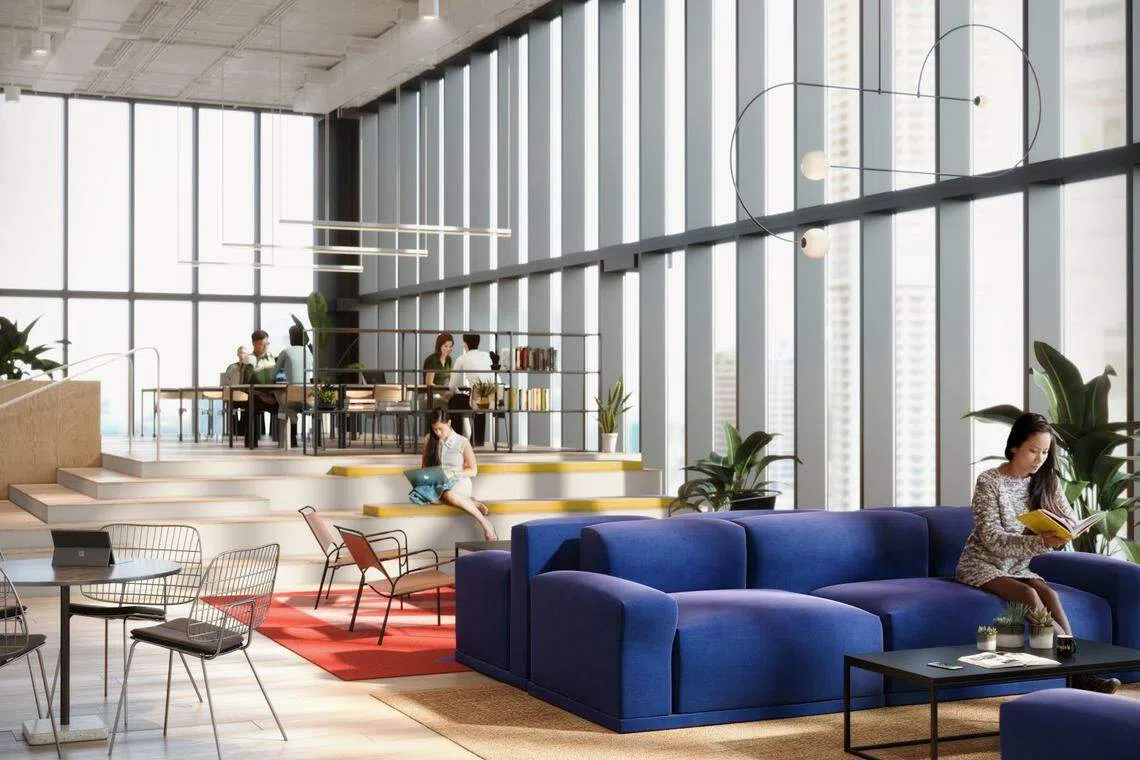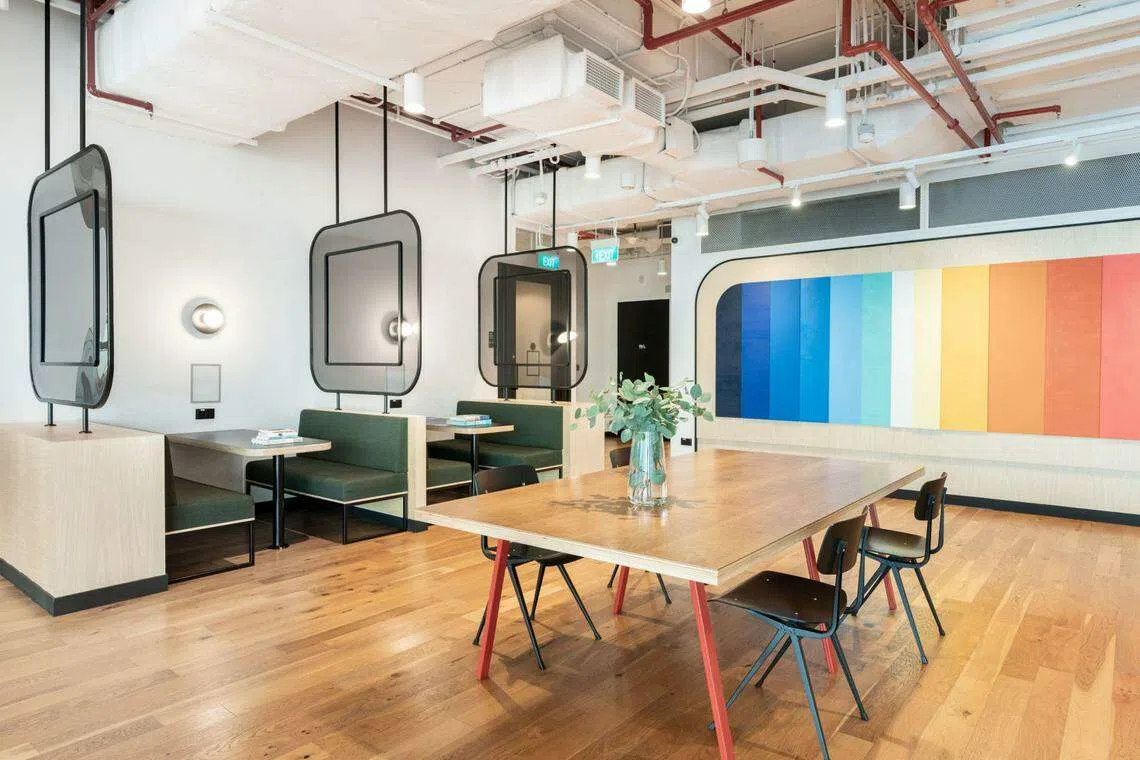Employees want to work from anywhere: A guide to designing a hybrid workplace strategy
Apart from providing the right tools and support system, companies can consider co-working spaces to give employees more flexibility and autonomy in the future of work
Nothing has upended the traditional concept of the office quite like almost two years of work-from-home arrangements, and all around the world, the notion of hybrid offices has been touted as the future of the modern workplace.
In the 2021 Work Trend Index by Microsoft, which outlines findings from a study of more than 30,000 people in 31 countries, employees overwhelmingly favour an office format that allows them to have the best of both worlds. Over 70 per cent want flexible remote work options to continue, while over 65 per cent are looking forward to more in-person time with their teams.
Here in Singapore, companies are paying attention to these evolving expectations. In the growing competition for talent at a time defined by work-related burnout and the "Great Resignation" - whereby a mass exodus has been observed across various industries - employers need to double down on caring for their employees' well-being.
A survey by human resources platform Employment Hero says that 39 per cent of employers are planning on formalising flexible work options as the norm across their organisation, giving their employees options to work from anywhere.
To create a hybrid work model that works takes careful consideration. If you are considering a hybrid format for your company's longer-term workplace strategy, here are several key points to note.

Aligning employee preferences with organisational needs
Navigate Asia in
a new global order
Get the insights delivered to your inbox.
First, and most critical of all, is the alignment of expectations. While multiple surveys have highlighted employee preference for at least three days of remote work a week, senior management might not necessarily agree. For example, a McKinsey survey of over 500 C-suite executives found that more than three quarters expected employees to be in the office more than three days a week post-pandemic.
Finding the right balance can be tricky. Companies need to be willing to experiment, and be responsive to employee feedback as their hybrid work models evolve in the rapidly-changing landscape.
Namely, leveraging survey findings and focus groups' research to understand organisational and employee needs, and turning these insights into actionable plans.
There should be clarity and alignment on team norms, for example, on when employees should gather in-person or can do so virtually. Once these house rules are worked out and put in place, they must be clearly communicated to both managers and employees to reduce ambiguity.

Professional work spaces outside of the home
Next on the to-do list is finding the right space or office solutions that meet your company's needs and expectations.
According to a survey of 1,000 C-suite and 1,000 non-C-suite employees conducted by WeWork and independent research company Workplace Intelligence - the WeWork and Workplace Intelligence "The Future of Work is Hybrid" survey - a truly hybrid workplace model means employees have the ability to work in different spaces, including corporate offices, co-working spaces, public spaces, and from home.
"While this approach will vary from company to company, the overall goal of a hybrid model is to meet the wide range of needs that employees may experience in any given workweek or workday - from the need to focus or collaborate, to the need to balance work with family commitments," the survey's authors say.
To cater to these varied and evolving needs, WeWork offers a suite of customisable workplace solutions, ranging from dedicated offices and desks to pay-as-you-go spaces.
In the United States, for example, Slack and Dropbox provide employees with a WeWork All Access membership, which allows access to hundreds of WeWork locations across cities worldwide, so that employees can live and work wherever is best for them. In this manner, the companies are able to offer their employees maximum flexibility without losing the benefits of work and collaboration spaces.
In Singapore, WeWork has 14 locations, which are mostly in the Central Business District and downtown regions.
Across the globe, WeWork spaces are designed with a distinct aesthetic direction meant to inspire creativity, and are furnished with premium amenities such as private phone booths and well-stocked pantries.
Networking events, lunches and wellness activities provide employees unique opportunities to connect with others sharing the same space. Studies have shown employees working from home miss the social connection, work perks, and the general camaraderie of the workplace.
Ultimately, says WeWork, the shift to hybrid working will require companies to rethink their corporate real estate portfolio and office space design. It is only through taking a long-term approach in the design of a sustainable and cost efficient hybrid model that companies can maximise employee collaboration, productivity and well-being, while protecting their bottom lines.

Providing the right tools and technology for hybrid work
At the heart of any successful hybrid model is the support system a company provides for its employees, to help them ease into the new way of working and iron out any kinks in the transition.
For a start, this means empowering employees with the right tools and technology, such as training for managers so that they can help their teams work more effectively while caring for their well-being.
Companies should also invest In technology that accommodates different communication styles and sets protocols to minimise disruptions to daily workflow and operations. More importantly, these actions signal to employees the company's commitment to the long-term success of the hybrid model.
In today's fast-changing workplace, bosses and managers who check in with their teams on a frequent basis are more likely to succeed in change management. In a hybrid work format, it is even more crucial for managers to regularly engage their teams, clearly communicating expectations - which may be shifting more quickly than before - in a timely manner.
Finally, to figure out a sustainable hybrid work strategy, companies must be comfortable with the idea that the first iteration of their hybrid work model is unlikely to be the perfect one. By adopting a "test, learn, and evolve" mindset, companies will have a better chance of coming up with new ways of adapting to the future of work - and thrive in the long run.
After all, change is the only constant.

Decoding Asia newsletter: your guide to navigating Asia in a new global order. Sign up here to get Decoding Asia newsletter. Delivered to your inbox. Free.
Copyright SPH Media. All rights reserved.

